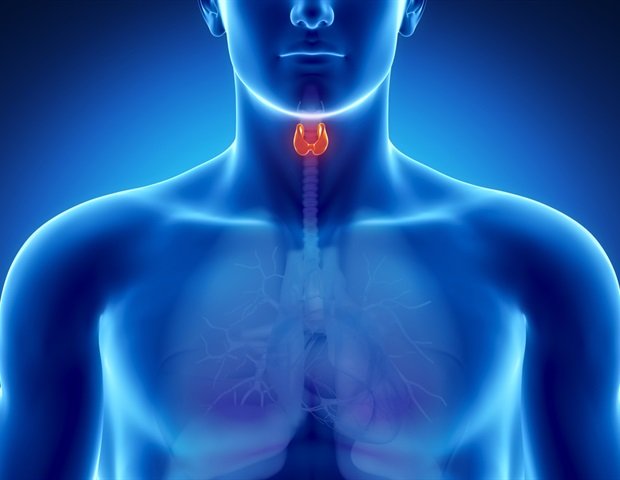In a 10-center study, microwave ablation offered progression-free survival rates and fewer complications than surgery in treating a form of thyroid cancer known as papillary thyroid carcinoma (PTC), according to research published today in Radiologya journal of the Radiological Society of North America (RSNA).
The most common type of thyroid cancer, PTC often occurs multifocally, meaning that two or more lumps or nodules (papillomas) are found within the thyroid gland. The occurrence of multifocality in PTC cases is particularly common and varies between approximately 23.5% and 60%.
Multifocal PTC is often treated with surgical resection, where all or part of the thyroid is surgically removed. Thyroid surgery is not without side effects. It can affect the patient’s quality of life due to factors such as scarring, the need for lifelong hormone replacement, and possible complications such as permanent hoarseness or reduced thyroid function.
Microwave ablation, a minimally invasive procedure that uses heat to destroy tumors, is currently under preliminary research and could be a viable alternative to surgery for some patients.
This study marks the first multicenter comparative analysis between microwave ablation and surgical resection for multifocal papillary thyroid cancer. These findings challenge traditional treatment paradigms and open new avenues for less invasive management strategies.”
Ming-An Yu, MD, senior author, director of interventional medicine at the China-Japan Friendship Hospital in Beijing, China
Researchers looked at 775 patients with ultrasound-detected multifocal Stage I PTC treated with microwave ablation or surgery at 10 centers between May 2015 and December 2021. followed by comparisons between the two groups. Propensity score matching helps reduce bias by creating comparable groups, allowing a more reliable assessment of treatment effect.
After propensity score matching, 229 patients in the microwave ablation group and 453 patients in the surgical resection group were followed for a median of 20 months (range, 12–74 months) and 26 months (range, 12–64 months), respectively.
Microwave ablation was associated with similar progression-free survival rates to surgery (5 years: 77.2% vs. 83.1%) but with fewer complications and a greater likelihood of preserving thyroid function.
Microwave ablation resulted in less blood loss, shorter incision length, and shorter operative and hospital stays. Permanent hoarseness (2.2%) and hypoparathyroidism (4.0%) were observed only in the surgical resection group.
“Our study showed that microwave ablation offers a promising treatment option for multifocal papillary thyroid cancer,” said Dr. Yu. “Furthermore, microwave ablation is associated with fewer complications and can preserve thyroid function, thereby improving patients’ quality of life. This represents a significant advance in the field of invasive thyroid cancer treatment.”
Dr. Yu notes that microwave ablation does not usually involve prophylactic lymph node removal. In surgical resection, prophylactic removal of lymph nodes is a common practice. However, the results provide the first evidence that even without lymph node removal, microwave ablation yielded comparable survival rates to surgical resection.
Source:
Journal Reference:
Zhao, ZL., et al. (2024) Microwave ablation versus surgical resection for multifocal T1N0M0 papillary thyroid carcinoma detected in the US: A 10-center study. Radiology. doi.org/10.1148/radiol.230459.
